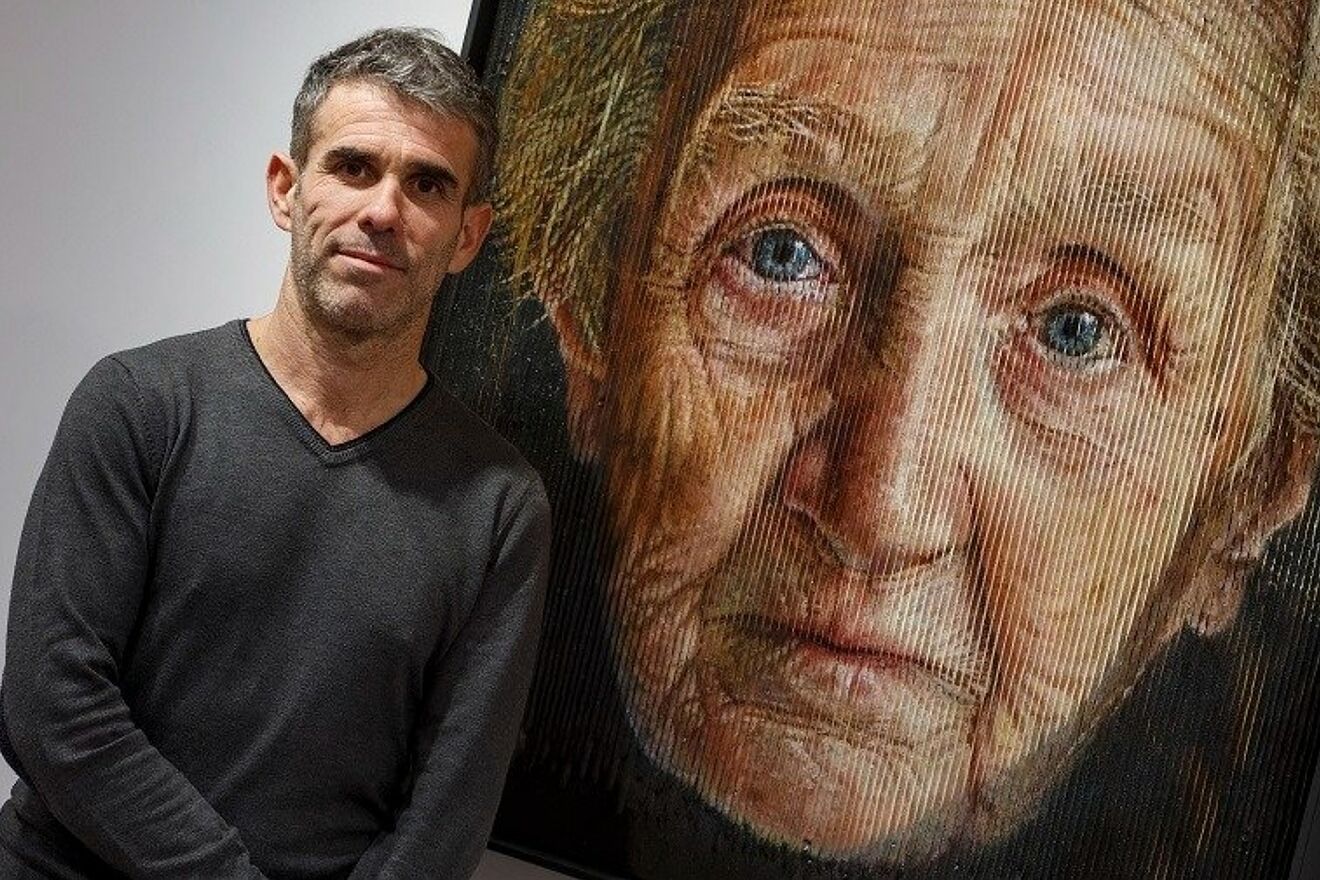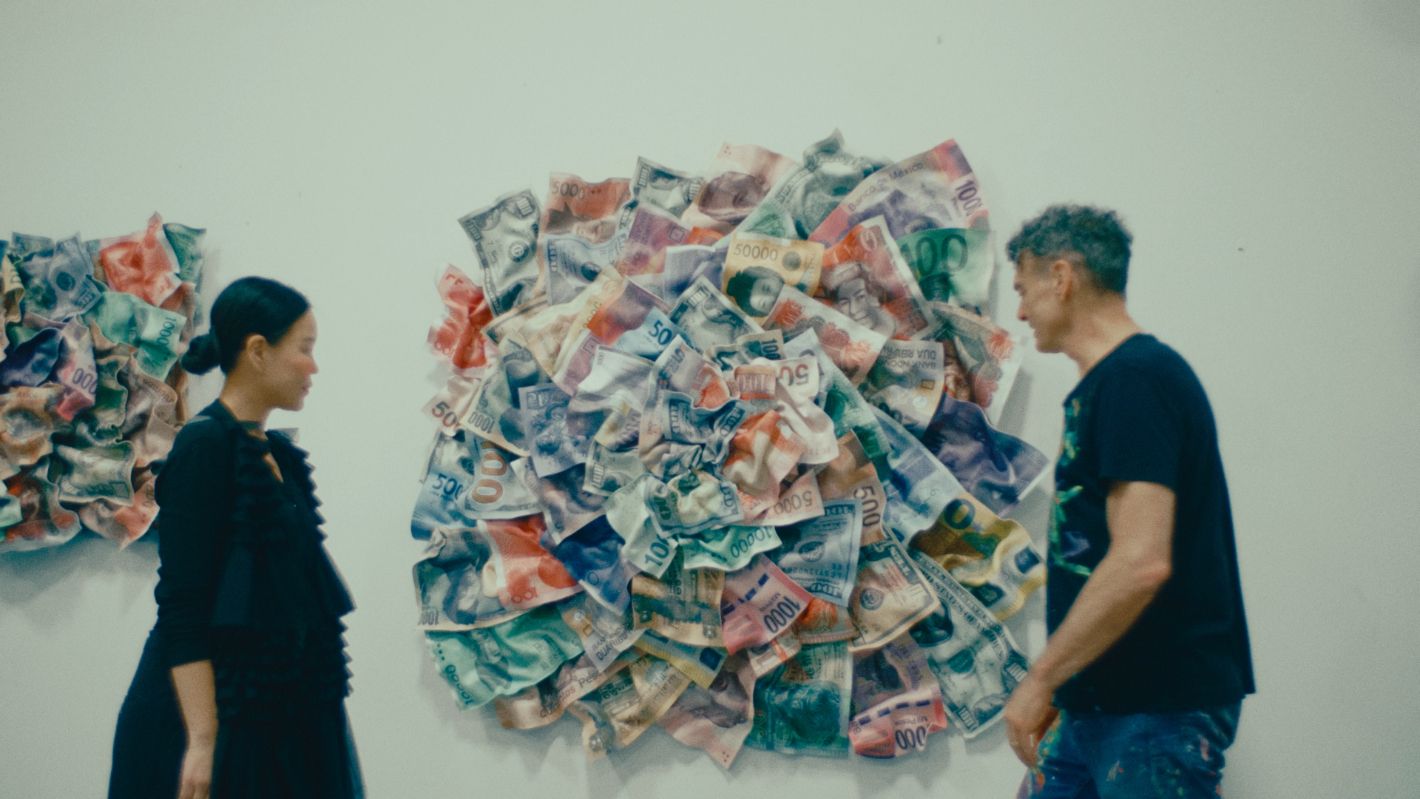
Features
Tatler Singapore - Spanish painter Sergi Cadenas on finding meaning through his illusory works
He explores the subject of identity via his mesmerising kinetic optical paintings that went viral on Instagram
By Tatler Singapore, Ode To Art
When we say that there’s no other hand-painted art that’s quite like Sergi Cadenas’ creations, it’s not a figurative statement that refers to his artistic style. Represented by Ode To Art this part of the world, the Spanish painter specialises in kinetic optical portraits that comprise an unusual and unique interactive element—they unveil two different faces, combined in one painting, when seen from different angles. These paintings are an intriguing sight to behold when viewed in person, or perhaps are better described as an experience.His portraits might be reminiscent of optical illusion posters, but are not the same, considering the fact that they are created entirely by hand. Imagine the difficulty this work demands then—it takes not just artistry, but also technique and skill to produce the illusion.
Each face appears to transform into another as the viewer walks past one of these works, an effect that requires great precision and careful execution. Wondering what is the “magic” behind it? Cadenas begins each piece of work by preparing his canvas with vertical ridges, upon which he paints two separate but aligned portraits. “The process is quite laborious. I begin by sketching out the two overlapping images to determine where to place the relief. Then, I manually apply the relief, one by one, and add two layers of white ‘preparation’. Once the ‘preparation’ is dry, I draw on both sides of the relief—painting on one side before moving to the other side. I continue painting until the piece is completed,” he explained.
He also revealed that the idea came from lenticular stickers. “Although it's not the same technique, that's where I got the idea. I searched for the appropriate materials, the right texture, and the subjects that I was passionate about, and that's how I came to create these paintings,” he said.There’s meaning, of course, beyond the transformative nature of his paintings. Cadenas’ utilises it in his exploration of the duality of identity. Through his depictions of two faces that are merged into one, the artist invites us to consider the ways in which our differences and similarities intersect. The fact that the art changes when one views it from another position points metaphorically to the dynamic, ever-changing nature of identity, reminding us that we are never static beings and that we should embrace how we are.
Each face appears to transform into another as the viewer walks past one of these works, an effect that requires great precision and careful execution. Wondering what is the “magic” behind it? Cadenas begins each piece of work by preparing his canvas with vertical ridges, upon which he paints two separate but aligned portraits. “The process is quite laborious. I begin by sketching out the two overlapping images to determine where to place the relief. Then, I manually apply the relief, one by one, and add two layers of white ‘preparation’. Once the ‘preparation’ is dry, I draw on both sides of the relief—painting on one side before moving to the other side. I continue painting until the piece is completed,” he explained.
He also revealed that the idea came from lenticular stickers. “Although it's not the same technique, that's where I got the idea. I searched for the appropriate materials, the right texture, and the subjects that I was passionate about, and that's how I came to create these paintings,” he said.There’s meaning, of course, beyond the transformative nature of his paintings. Cadenas’ utilises it in his exploration of the duality of identity. Through his depictions of two faces that are merged into one, the artist invites us to consider the ways in which our differences and similarities intersect. The fact that the art changes when one views it from another position points metaphorically to the dynamic, ever-changing nature of identity, reminding us that we are never static beings and that we should embrace how we are.
Cadenas has been training for a big part of his life to run his family’s centuries-old foundry in Spain but found his calling when he started painting at the age of 30. He taught himself how to paint and then went on to develop his own distinctive technique, a result of his curiosity and passion for experimentation. “I have not been influenced by other artists, and didn’t go to any art school to learn painting. My greatest talent is my innate ability to draw and paint. Observing everything, travelling, meeting people—these inspire me to continue painting,” he shared. He aims to reflect and memorialise the candid, natural side of people with his portraits. The effect of ageing and painting the elderly, in particular, are two subjects he is very interested in. “The paintings that I am most proud of are those featuring portraits of those growing old—they show the mark of time and the inevitable process we all go through. Creating them teaches me to cherish and respect this life that I have,” he said about his most memorable works.



